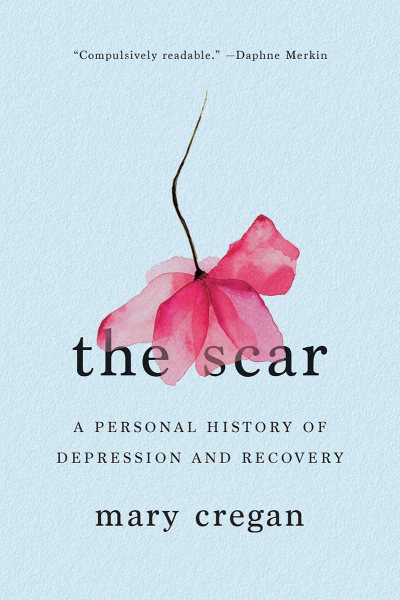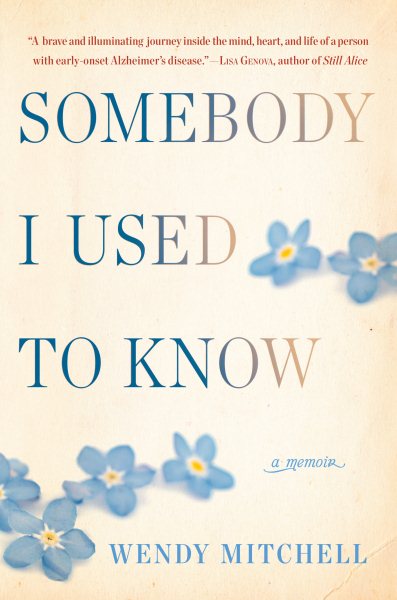
We are celebrating Pasadena Mental Health Day 2019 on Saturday, May 18 with keynote speakers, a resource fair, and panel discussions about mental health. In honor of the occasion, we’ve selected some memoirs about a variety of mental health topics, including depression, bipolar disorder, and post-traumatic stress disorder. For more information, visit this Saturday, or come in any time and ask for help finding library materials, local organizations, and other resources about mental health.
If you are struggling, you are not alone. Know there is help: the National Suicide Prevention Lifeline is always available at 800-273-TALK (8255). The National Alliance on Mental Illness website offers information, resources and help finding support.
Rock Steady: Brilliant Advice From My Bipolar Life by Ellen Forney [graphic novel memoir]
Forney follows up her graphic memoir, Marbles: Mania, Depression, Michelangelo, & Me, with a practical guide to understanding, navigating, and managing bipolar disorder (and mood disorders in general). Forney, who was diagnosed with bipolar disorder in the late ’90s and documents the many years it took to find stability, sets forth her personal experiences, coping strategies, and extensive research on a variety of topics including therapy, medication management, coping tools, warning signs, and stigma. She stresses that mood disorders require regular self-assessment, care, support, and treatment maintenance, and her approach makes this task list feel less daunting. Forney effortlessly conveys her message in clear, succinct writing combined with energetic but simple visuals to illustrate difficult concepts. What results is a balanced, uncluttered resource, infused with empathy, humor, and encouragement. This guide is mental health literacy at its best, making it a must-read for those with mood disorders and their loved ones, health professionals, and anyone looking to gain a greater understanding of an often misunderstood but common condition.

In her powerful debut memoir, Cregan, a Barnard College English literature lecturer, reflects upon a lifetime of struggle with clinical depression. In 1984, Cregan, then 27, gave birth to a daughter who died within days due to a heart defect. She plummeted into despair, ending up in a psychiatric hospital, where she attempted suicide by slicing her neck with a shard of glass. The experiences took a toll on Cregan’s marriage, and five years after her baby’s death, she and her husband divorced. Cregan eventually realized that her depression had begun much earlier—possibly in adolescence—and was exacerbated by an Irish Catholic upbringing and religious beliefs based on shame and guilt. She weaves into her narrative the history of medical treatment for mental disorders: in her own case this involved electric shock therapy, various medications (Prozac and Lexapro among them), and psychotherapy. In explaining how her illness has “shaped her history,” Cregan uses medical records from her months in the hospital, as well as research on mental illness as she examines the difficult path that led her from hopelessness to wellness, a new marriage, and eventual motherhood. Cregan writes lucidly of her illness and offers hope as well as valuable insights for those living with depression.
Ten Ways Not To Commit Suicide: A Memoir by Darryl McDaniels
Most people realize that the public and private personas of our favorite performers clash; but there are, it seems, different rules for rappers. In a genre predicated on the premise of “keeping it real,” these personas are unified by both fan expectations and industry pressures. Here McDaniels (DMC), one-third of pioneering hip-hop group Run D.M.C., shows how devastating such restrictive thinking can be. The self-proclaimed “nerd” and “people pleaser” discusses the meteoric rise and fall of his iconic group and his strained relationship with bandmate Joseph “Run” Simmons. His descent into alcoholism and depression are written with such candor that it feels as though one is reading his personal diary. DMC not only deftly and concisely explains the Run D.M.C. formation and breakup but also intersperses inspirational wisdom for others struggling with difficult life circumstances as well. This important read isn’t “just” a memoir; it is also a self-help book that opens the door for conversations about mental health.
A Kind of Mirraculas Paradise: A True Story About Schizophrenia by Sandra Allen
In this insightful memoir, Allen, a former BuzzFeed features editor, tracks a relative’s descent into mental illness. In 2009, Allen, who had moved from California to Iowa City to attend the University of Iowa’s creative-nonfiction writing program, received a phone call from her uncle Bob, with whom she had long been out of touch. He explained that he had written a book about his life and that he wanted her to read it. Allen’s extended family had spent time together during vacations at a Minnesota lake when Allen was a child, but over time Allen saw her uncle Bob less frequently, and members of her family referred to him as “crazy.” When the manuscript arrived, Allen didn’t want to deal with it: “It was hideous to look at, even from a distance. Its pages literally reeked.” The manuscript contained incomprehensible ramblings, racial and sexual slurs, and family stories better left untold. In time, she felt compelled to bring his story to the public. She began to edit his writing, and with each rewrite Allen became more engaged with her uncle’s manuscript and his life. Allen builds her uncle’s story on a solid scaffolding of chapters of her family history that alternate with rewritten passages of Bob’s memoir that detail his growing up in Northern California in the 1960s and the state of mental-health care in America at that time as he underwent treatment for schizophrenia. Allen offers readers an incredible glimpse into the life of a person battling with schizophrenia.

The vacant stare in Julianne Moore’s eyes was just right for someone with dementia, Mitchell told the actress after watching Still Alice. Mitchell had been invited to the premiere of the movie in London because of her participation in the Alzheimer’s Society, which she joined after she was diagnosed with early-onset dementia at the age of 58. In this powerful memoir, she describes the progression of the disease as it begins to steal away her identity, making her into a person she does not recognize. As time passes, the gulf widens considerably between the woman she becomes, unable to cook for herself or identify familiar faces, and the woman she once was, a driven single mom who was renowned at work for her remarkable memory. By writing to her prediagnosis self as if she were a completely different person, Mitchell beautifully illustrates just how much of a person’s identity can be stolen by dementia. But she does not accept her new limitations quietly, instead volunteering to participate in research and speaking at conferences to increase understanding of the disease. She even finds comfort in the way she must now live in the present moment. Somebody I Used to Know is both an indispensable guide for people grappling with the consequences of a dementia diagnosis and a stirring account of courage in the face of devastating loss.

“Depression is the flaw in love. To be creatures who love, we must be creatures who despair,” begins Solomon’s expansive and astutely observed examination of the experience, origins and cultural manifestations of depression. While placing his study in a broad social context according to recent research, some 19 million Americans suffer from chronic depression he also chronicles his own battle with the disease. Beginning just after his senior year in college, Solomon began experiencing crippling episodes of depression. They became so bad that after losing his mother to cancer and his therapist to retirement he attempted (unsuccessfully) to contract HIV so that he would have a reason to kill himself. Attempting to put depression and its treatments in a cross-cultural context, he draws effectively and skillfully on medical studies, historical and sociological literature, and anecdotal evidence, analyzing studies of depression in Cambodia under the Khmer Rouge, Inuit life in Greenland, the use of electroshock therapy and the connections between depression and suicide in the U.S. and other cultures. In examining depression as a cultural phenomenon, he cites many literary melancholics Virginia Woolf, Samuel Beckett, John Milton, Shakespeare, John Keats and George Eliot as well as such thinkers as Freud and Hegel, to map out his “atlas” of the condition. Smart, empathetic and exhibiting a wide and resonant knowledge of the topic, Solomon has provided an enlightening and sobering window onto both the medical and imaginative worlds of depression.

n this engrossing memoir, Saks, a professor of psychiatry at U.C.–San Diego, demonstrates a novelist’s skill of creating character, dialogue and suspense. From her extraordinary perspective as both expert and sufferer (diagnosis: “Chronic paranoid schizophrenia with acute exacerbation”; prognosis: “Grave”), Saks carries the reader from the early “little quirks” to the full blown “falling apart, flying apart, exploding” psychosis. “Schizophrenia rolls in like a slow fog,” as Saks shows, “becoming imperceptibly thicker as time goes on.” Along the way to stability (treatment, not cure), Saks is treated with a pharmacopeia of drugs and by a chorus of therapists. In her jargon-free style, she describes the workings of the drugs (“getting med-free,” a constant motif) and the ideas of the therapists and physicians (psychologist, psychiatrist, psychoanalyst, cardiologist, endocrinologist). Her personal experience of a world in which she is both frightened and frightening is graphically drawn and leads directly to her advocacy of mental patients’ civil rights as they confront compulsory medication, civil commitment, the abuse of restraints and “the absurdities of the mental care system.” She is a strong proponent of talk therapy (“While medication had kept me alive, it had been psychoanalysis that helped me find a life worth living”).
Show Me All Your Scars: True Stories of Living With Mental Illness edited by Lee Gutkind
Gutkind, himself no stranger to the topic of mental illness (Stuck in Time: The Tragedy of Childhood Mental Illness), has assembled a collection of other authors’ writings that conveys what it is like to experience mental illness and expands the ways in which it can be expressed. The 20 selections are most unified in resisting traditional narrative tropes. Some stories withhold the biographical details about the narrator or protagonist that are obligatory in straightforward accounts, as in the first piece, Ella Wilson’s “Take Care,” which plunges directly into the height of a manic episode. Meanwhile, Ryan Bloom’s “Scuse Me While I Fuck the Sky” experiments with formatting and style to convey what it is like to have obsessive-compulsive disorder (OCD). Lesser-known illnesses are also featured: Alison Townsend’s “There’s a Name for That? Living with Trichotillomania” intersperses her own story with research into the compulsion to pull one’s hair. This volume demonstrates that narrative—as opposed to hard, unvarnished facts—can be the most effective way to impart information and promote activism.
Evil Hours: A Biography of Post-Traumatic Stress Disorder by David J. Morris
Former marine infantry officer Morris (Storm on the Horizon) blurs the line between clinical and creative literature in a lucid etiology of a “species of pain that went unnamed for most of human history… now the fourth most common psychiatric disorder in the United States.” Morris draws from his own traumatic Iraq War experiences and ancient “historical antecedents” such as the Sumerian Lamentation of Ur and Homer’s Iliad and Odyssey. He moves on to postbellum America, reminding us that many of the Wild West’s most famous gunslingers were Civil War veterans, then to WWI, the “first conflict where war neuroses were officially identified and treated,” and finally the Vietnam War, the “single most important event in the history of psychological trauma.” The book’s second half describes and assesses the various ways in which PTSD is currently treated, using Morris’s own treatment as an example (he found yoga most effective). Morris offers balanced criticisms of the VA, and though he’s focused on American veterans, he attends to “rape, genocide, torture, and natural disaster” as other causes of PTSD in civilians. Well-integrated autobiographical elements make this remarkable work highly instructive and readable.
